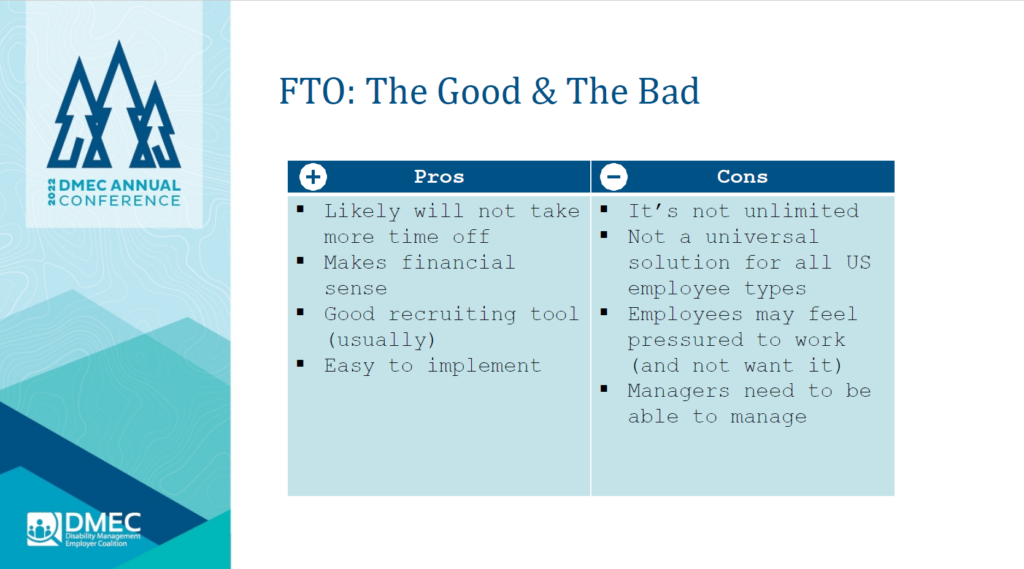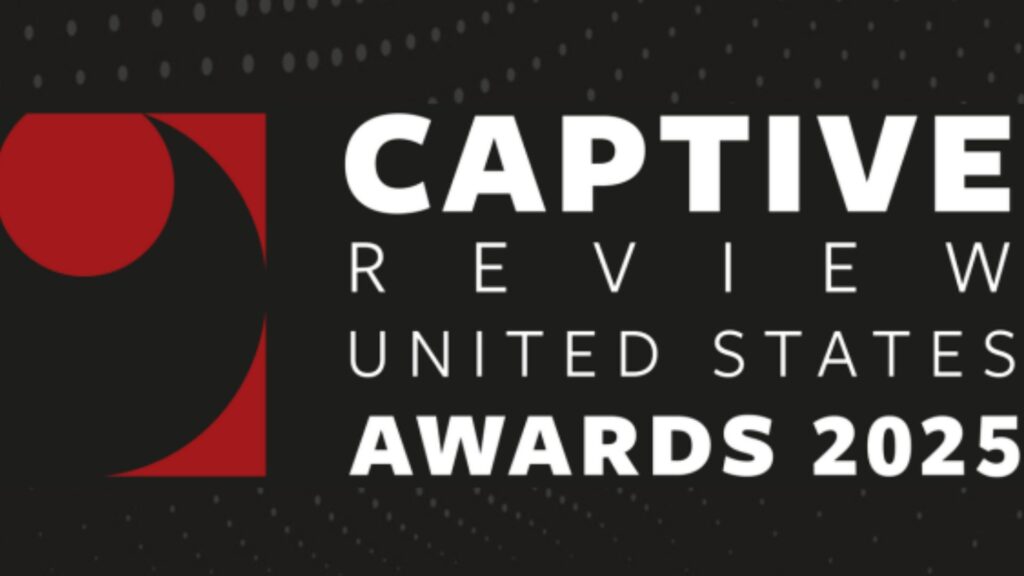Whether or not we have seen the worst of The Great Resignation, savvy employers are not new to adjusting their benefits and “perks” programs to better align with workforce desires. At the Disability Management Employer Coalition (DMEC) Annual Conference last week in Denver, I spoke specifically on whether Flexible Time Off (FTO) has taken over as the frontrunner, versus the more traditional Paid Time Off (PTO) approach. I thought you might be curious to know the answer, at least in my opinion, so I’m jotting down the key points from my presentation here.
Background
As with so many things in business and in life, in order to clearly understand the current state of PTO, it’s critical to look back at the history of the concept. In 1910, President Taft proposed 2-3 months of required vacation, “in order to continue his work next year with the energy and effectiveness which it ought to have.” Countries like Germany, Sweden, and others were no strangers to this idea, and set forth on setting global standards regarding minimum levels of vacation. Today, the U.S. is one of only six countries in the world – and the only industrialized nation – without a national paid leave policy. So, what gives?
At least on paper, Americans seem to prefer work over vacation. You may be laughing or rolling your eyes, but it is a fact that significant time off goes unused at the end of the year (people choose to lose it rather than use it). In some cases, this may be the result of a corporate culture that, while they may document PTO programs, do not actually encourage the use of that time. If you’re expected to work while on vacation, you may not feel it worthwhile to take said vacation.
PTO
Over the years additional policies popped up to fill some of these gaps, such as leave related to COVID-19, sick leave, disability, parental leave, and family leave. Many organizations arrived at a PTO program in which an allocated number of days account for different types of leave which vary by employer, but might include vacation, bereavement, sick and personal leave. While this creates efficiency and reduces unscheduled absences, this design (perhaps inadvertently) encourages working while sick, as employees do not want to use days within their bucket when they have a cold, since those same days could be used on a tropical vacation or, on a less happy note, in the case of a personal or family emergency. This flaw went from acceptable to unacceptable in light of the pandemic, and turned some organizations off of PTO and on to FTO.
FTO
Flexible Time Off (FTO) allows for ultimate flexibility in the volume of “vacation” time taken. With the expectation that employees do their jobs, meet deadlines and achieve their individual and corporate goals, time for rest is scheduled at the discretion of managers. FTO however is not to be confused with unlimited vacation days. While a nice idea, some challenges exist around FTO, including:
- FTO plans are unlikely to meet the needs for vacation plans and sick/safe plans, and are not recommended to fulfill all of these requirements given federal and state law complexities
- Performance management and manager training is critical with this design
- Be careful about creating guidelines around the number of acceptable days off, because it can quickly morph into a PTO plan with wage liability
- Participation in FTO plans for non-exempt employees is not recommended as it will result in payroll obstacles and litigation susceptibility
Given these factors, however, FTO plans can be a powerful organizational tool. If you’re considering FTO, I recommend first answering the following questions:
- Which population should be considered for FTO?
- What approach will ensure managers are managing workload instead of time off?
- What scheduling and approval processes will be implemented?
- How will you ensure employees have the opportunity to leverage their FTO?
- Are you accounting for sick/safe requirements through another policy/program?
- How will you answer to the stigma that FTO is designed to decrease utilization and save you (the employer) from PTO liability?

The Big Reveal
FTO can bring a lot to the table for an organization: it is unlikely to result in more time off (than before), it is financially savvy, a good recruiting tool, and relatively easy to implement. On the flip side, however, I noted some real challenges. In the end, and if you read this article for the clickbait title, my investigative answer is no: FTO is not the new PTO. It should however be considered as one tool within the absence management toolbox, and assessed according to your individual employer needs and priorities.


